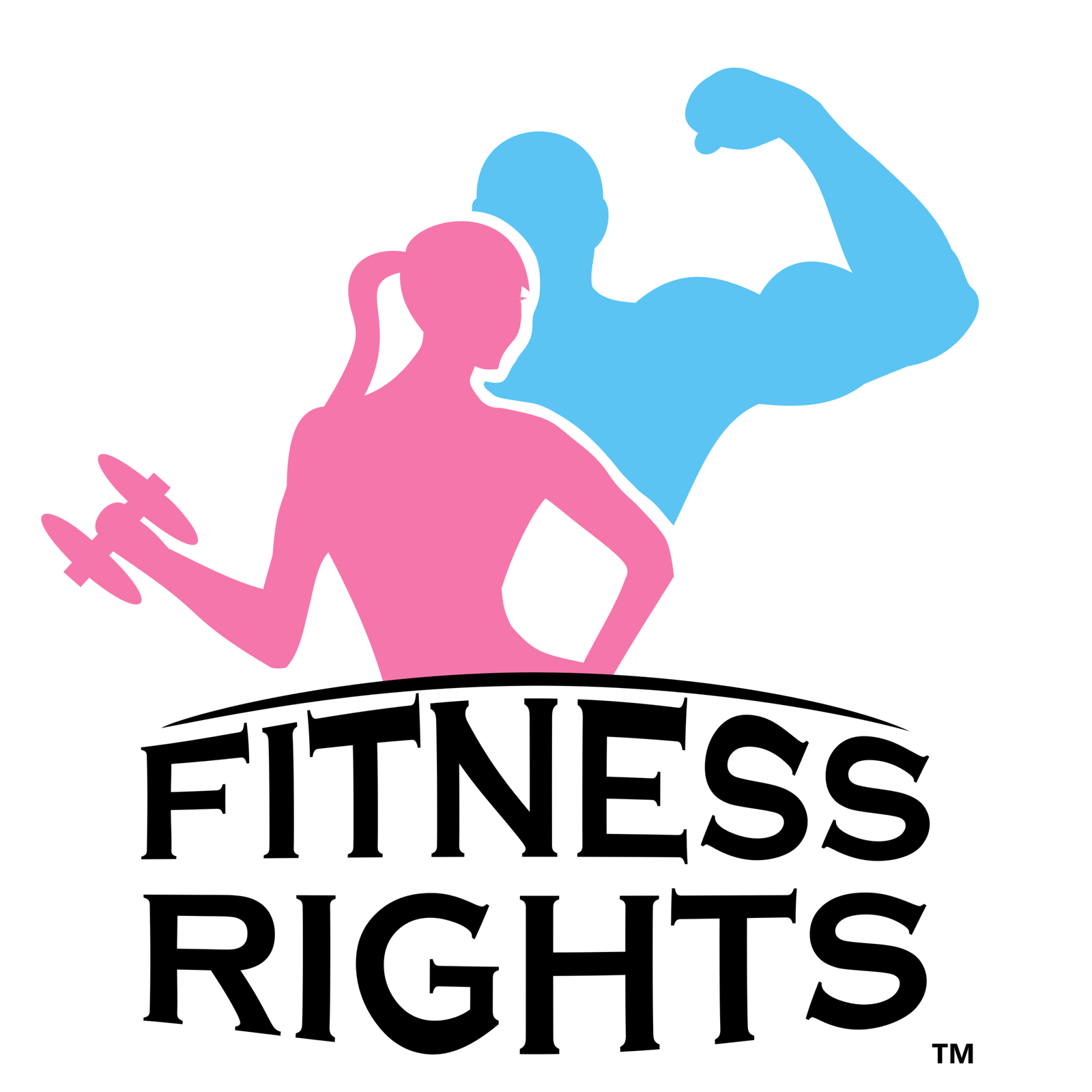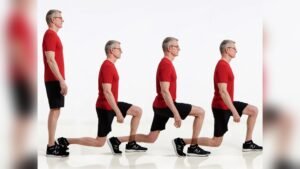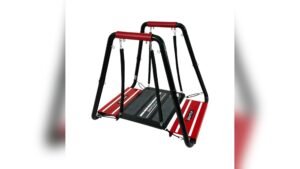Are you looking for a simple yet powerful way to boost your workouts? Flat latex resistance bands might be exactly what you need.
These bands are lightweight, portable, and perfect for adding resistance to your exercises without bulky equipment. Whether you want to build strength, improve flexibility, or tone your muscles, flat latex resistance bands offer constant tension that helps activate your muscles more effectively.
You’ll discover easy-to-follow exercises that fit your fitness level and goals. Ready to transform your routine and get real results? Keep reading to find out how flat latex resistance bands can take your workouts to the next level.

Credit: gofit.net
Table of Contents
ToggleBenefits Of Flat Latex Bands
Flat latex resistance bands offer many benefits for exercise routines. They are versatile tools suitable for all fitness levels. These bands help improve strength, flexibility, and muscle control. Their flat design makes them easy to handle and less likely to roll up during workouts. Using flat latex bands regularly can enhance your overall fitness and reduce injury risk.
Muscle Activation And Strength
Flat latex bands provide constant resistance during every movement. This resistance forces muscles to work harder. It activates more muscle fibers than free weights alone. The tension increases strength by challenging muscles throughout the exercise. This leads to better muscle tone and power over time.
Flexibility And Range Of Motion
These bands support smooth stretching and controlled movement. They help lengthen muscles safely and gently. Flat latex bands assist in improving joint mobility. Using them regularly can increase your flexibility. This wider range of motion lowers stiffness and boosts performance in daily activities.
Constant Tension Advantage
Flat latex bands deliver steady tension from start to finish. This constant force keeps muscles engaged during the entire exercise. It reduces the chance of momentum taking over movements. The result is more effective workouts and faster progress. Constant tension also aids in better muscle endurance.
Latex Vs Non-latex Bands
Choosing between latex and non-latex resistance bands affects your exercise experience. Each type has unique features that suit different needs. Understanding these differences helps you pick the right band for your workouts.
Elasticity And Resistance Levels
Latex bands stretch more and offer higher resistance. They provide strong tension even at the start of movement. Non-latex bands stretch less but give steady resistance. They suit gentle, controlled exercises better.
Comfort And Skin Sensitivity
Latex bands may cause skin irritation in some users. Non-latex bands are hypoallergenic and softer on the skin. They reduce the risk of allergies and discomfort during workouts.
Durability And Maintenance
Non-latex bands resist wear and tear better than latex. They do not snap easily and last longer with use. Latex bands need careful handling to avoid damage and maintain elasticity.
Cost And Longevity
Latex bands usually cost less upfront. They can lose stretch and break faster over time. Non-latex bands cost more but offer better long-term value due to durability.
Choosing The Right Band
Choosing the right resistance band is key for effective workouts. The type of band affects comfort, durability, and resistance level. Flat latex bands offer unique benefits that suit many exercise routines. Understanding when to pick latex or non-latex helps you train smarter and safer.
When To Pick Latex
Latex bands provide strong elasticity and snap-back. They keep tension constant during every movement. These bands suit dynamic exercises needing quick resistance changes. Latex bands come in many resistance levels, from light to heavy. They are ideal for strength training and muscle building. Budget-wise, latex bands are often cheaper for bulk buying. Use latex if you want powerful resistance and variety.
When To Pick Non-latex
Non-latex bands use fabric or synthetic materials. They last longer and resist tearing better than latex. These bands feel softer and prevent skin irritation. People with latex allergies find non-latex safer. Non-latex bands offer steady, gentle resistance throughout exercises. They fit low-impact workouts and sensitive skin needs. Choose non-latex for durability, comfort, and allergy concerns.
Full-body Workout With Flat Bands
Flat latex resistance bands are simple tools that offer effective full-body workouts. Their design provides steady tension, which helps muscles work harder during each move. These bands suit all fitness levels and are easy to carry anywhere. Using flat bands can improve strength, flexibility, and endurance without heavy equipment.
Try exercises that target different body parts for a complete workout. Focus on the upper body, lower body, and core to build balanced strength. Flat bands add resistance that shapes muscles and enhances control in every movement.
Upper Body Exercises
Flat bands help tone arms, shoulders, and chest muscles. Try bicep curls by stepping on the band and pulling the handles upward. For shoulders, do lateral raises by lifting the band to the side while standing. Chest presses mimic push-ups but use the band for added resistance. These moves increase muscle strength and improve posture.
Lower Body Moves
Target legs and glutes with squats and lunges using flat bands. Place the band around your thighs for extra resistance during squats. Step back into lunges while holding the band for added tension. Side leg lifts with the band strengthen hips and outer thighs. These exercises build power and tone lower body muscles.
Core Strengthening Routines
Flat bands engage core muscles for better stability and balance. Try seated twists by holding the band and rotating your torso side to side. Leg raises with the band increase lower abdominal strength. Plank rows pull the band while holding a plank position to work the entire core. These routines improve posture and reduce injury risk.
Proper Use And Safety Tips
Using flat latex resistance bands correctly ensures safe and effective workouts. These bands add resistance, helping build strength and flexibility. Follow safety tips to avoid injuries and get the best results from your exercises. Proper use also extends the life of your bands. Pay attention to positioning, injury prevention, and band care.
Correct Positioning
Place the band securely to avoid slipping during exercises. Keep your body stable and maintain good posture. Avoid twisting your joints unnaturally. Hold the band with a firm grip but without straining your hands. Start with light resistance and increase gradually. Proper alignment helps target muscles and reduces risk of injury.
Avoiding Common Injuries
Warm up before using resistance bands to prepare your muscles. Do not stretch the band beyond its limit to prevent snapping. Avoid sudden, jerky movements that strain muscles and joints. Use smooth and controlled motions during each exercise. Stop if you feel pain or discomfort. Rest between sets to allow muscle recovery. Replace worn or damaged bands immediately.
Band Care And Maintenance
Store bands away from direct sunlight and heat sources. Clean bands with mild soap and water after each use. Dry them completely before storing to prevent damage. Check bands regularly for tears, cracks, or weak spots. Avoid sharp objects and rough surfaces during exercises. Proper care keeps bands elastic and safe for longer use.

Credit: www.amazon.sg
Incorporating Bands Into Routine
Incorporating flat latex resistance bands into your exercise routine enhances strength and flexibility. These bands provide steady tension, which activates muscles more effectively than bodyweight alone. Using them regularly supports better movement control and helps prevent injuries. You can easily add these bands to various workouts for balanced muscle development.
Combining With Other Equipment
Flat latex resistance bands work well with dumbbells, kettlebells, and stability balls. Pairing bands with weights adds resistance without extra bulk. This combination challenges your muscles differently, improving strength and endurance. Use bands during squats or presses to increase muscle activation. Mixing equipment keeps workouts fresh and targets muscles from new angles.
Progressing Resistance Levels
Start with light resistance bands to learn proper form. Gradually increase band thickness or move to stronger bands for more challenge. Progressing resistance helps avoid plateaus and builds muscle steadily. Change band length or combine multiple bands for added tension. Track your progress to ensure continuous improvement and avoid injury.
Workout Frequency And Recovery
Use resistance bands three to five times each week for best results. Allow muscles time to recover between sessions to prevent overuse. Stretch and warm up before band exercises to reduce injury risk. Listen to your body and rest if you feel pain or soreness. Consistent training with proper recovery leads to stronger, more flexible muscles.

Credit: www.amazon.com
Frequently Asked Questions
Are Flat Bands Good For Exercise?
Flat bands are excellent for exercise. They provide constant tension, boost muscle activation, and improve flexibility during workouts.
How To Use A Flat Resistance Band?
Secure the flat resistance band around a stable object or body part. Pull or stretch it slowly during exercises. Maintain tension for muscle activation. Use it for strength, flexibility, or rehabilitation workouts. Adjust resistance by changing the band’s length or thickness.
Which Is Better, Latex Or Non-latex Resistance Bands?
Latex bands provide strong elasticity and varied resistance for intense workouts. Non-latex bands offer durability, comfort, and hypoallergenic benefits. Choose latex for dynamic training and non-latex for sensitive skin and longer-lasting use. Your needs determine the best option.
How To Use Latex Exercise Bands?
Hold the latex band securely and stretch it slowly across targeted muscles. Maintain steady tension and control during exercises. Avoid overstretching to prevent snapping. Combine with squats, lunges, or arm workouts for strength and flexibility. Store bands away from heat and oils to prolong lifespan.
Conclusion
Flat latex resistance bands offer effective, simple workouts for all fitness levels. They help build strength and improve flexibility with easy-to-learn exercises. Using these bands regularly can boost muscle tone and support joint health. Their lightweight and portable design makes workouts possible anywhere.
Remember to choose the right resistance level for your goals. Stay consistent and patient to see steady progress. Flat latex bands provide a practical tool to enhance your fitness routine without complicated equipment. Try including them in your daily workouts to feel stronger and more flexible over time.







